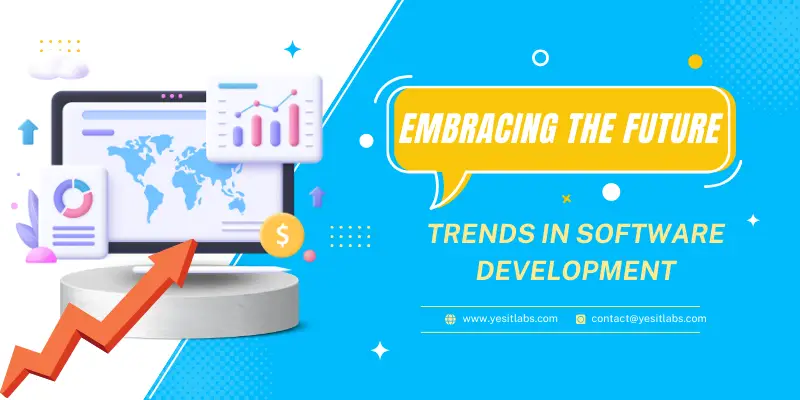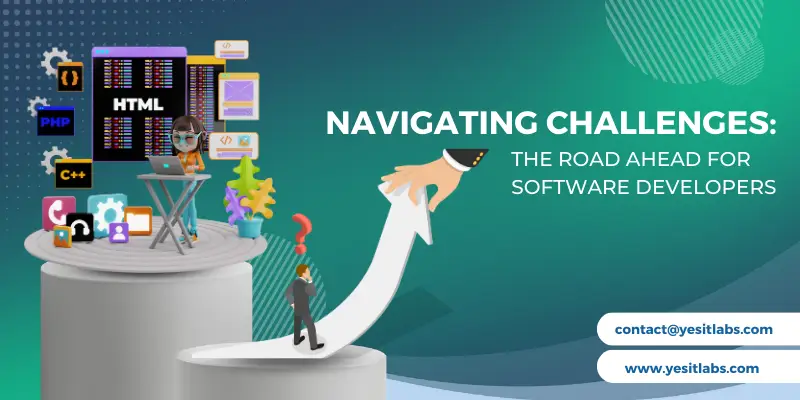
 By Admin
By Admin Innovations in Healthcare Software: Transforming the Future
Continuous advancements in software technology are profoundly transforming the landscape of healthcare. These innovations are not just enhancing medical practices but also revolutionizing patient care across various domains. Here’s a comprehensive exploration of some of the most impactful developments:
1. Artificial Intelligence (AI) and Machine Learning (ML)
AI and ML have emerged as game-changers in healthcare innovation, offering unprecedented capabilities in data analysis, decision support, and personalized medicine:
- Drug Discovery: AI algorithms are leveraging machine learning models to sift through vast repositories of biomedical data. By identifying patterns and correlations in genetic, chemical, and clinical data, AI accelerates the drug discovery process. Pharmaceutical companies can streamline the identification of potential drug candidates, predict their efficacy, and even anticipate adverse reactions—all while significantly reducing the time and cost traditionally associated with drug development.
- Clinical Decision Support: AI-powered clinical decision support systems are empowering healthcare providers with actionable insights derived from comprehensive patient data analysis. These systems, exemplified by platforms like IBM’s Watson for Oncology, assist clinicians in making informed treatment decisions. By synthesizing patient histories, medical literature, and real-time data inputs, AI suggests personalized treatment options that align with evidence-based practices and patient-specific factors. This not only enhances diagnostic accuracy but also improves treatment outcomes by minimizing errors and optimizing therapeutic interventions.
- Natural Language Processing (NLP): In healthcare, a substantial amount of critical information is embedded within unstructured clinical notes, physician narratives, and medical records. NLP technologies are designed to extract meaningful insights from these textual sources, converting free-text data into structured formats that can be analyzed computationally. By parsing and interpreting clinical narratives, NLP facilitates data-driven decision-making, supports clinical research endeavors, and enhances healthcare operational efficiencies. For instance, NLP algorithms can identify symptoms, classify diseases, extract treatment protocols, and even predict patient outcomes, offering invaluable support to healthcare professionals in their diagnostic and therapeutic endeavors.
Healthcare Software Development continues to evolve rapidly, driven by these technological advancements.
2. 3D Printing and Bioprinting
The evolution of 3D printing technology has transcended traditional manufacturing paradigms, ushering in a new era of personalized healthcare solutions.
- Custom Implants: 3D printing enables the fabrication of bespoke medical implants tailored to individual patient anatomies. From cranial plates and orthopedic joints to dental prosthetics and prosthetic limbs, additive manufacturing techniques allow for the creation of patient-specific devices with unprecedented precision and functionality. By leveraging patient-specific imaging data, healthcare providers can design implants that optimize anatomical fit, mitigate surgical risks, and promote postoperative recovery. The ability to customize medical implants according to patient-specific requirements not only enhances clinical outcomes but also fosters patient satisfaction and quality of life improvements.
- Bioprinting: Beyond conventional medical device manufacturing, bioprinting technologies are pioneering the fabrication of living tissues and organ constructs. By utilizing bioinks composed of living cells, bioprinters can create complex tissue architectures with biomimetic functionalities. This capability holds transformative implications for regenerative medicine, transplantation therapies, and disease modeling applications. Researchers are actively exploring bioprinting methodologies to produce vascularized tissues, cardiac patches, and even functional organs such as kidneys and liver lobules. Bioprinting represents a paradigm shift in healthcare, offering the potential to address organ shortages, enable patient-specific therapies, and advance the field of personalized medicine by harnessing the regenerative capacity of biologically relevant materials.
3. Precision Medicine and Genomics

The advent of genomic technologies has catalyzed the era of precision medicine, enabling tailored healthcare interventions that account for individual genetic variability:
- Genomic Sequencing: The sequencing of the human genome has facilitated a comprehensive understanding of genetic variations and their implications for health and disease. Advances in genomic technologies, including next-generation sequencing (NGS) platforms, enable healthcare providers to decode an individual’s genetic blueprint with unprecedented speed and accuracy. By analyzing genomic data, clinicians can identify disease-causing mutations, assess inherited predispositions, and predict treatment responses based on genetic profiles. Genomic sequencing informs personalized medicine approaches by guiding therapeutic decisions, optimizing drug efficacy, and minimizing adverse effects—ushering in a new era of precision healthcare that prioritizes patient-centric treatment strategies.
- Liquid Biopsies: Non-invasive liquid biopsy technologies are revolutionizing cancer diagnostics and treatment monitoring. These assays analyze circulating biomarkers, such as circulating tumor DNA (ctDNA) and exosomes, present in blood or other bodily fluids. Liquid biopsies offer a minimally invasive alternative to traditional tissue biopsies, enabling real-time assessment of tumor dynamics, treatment response, and disease progression. By detecting actionable genetic alterations and monitoring minimal residual disease, liquid biopsies empower oncologists to personalize cancer care strategies, optimize treatment regimens, and improve patient outcomes through timely therapeutic interventions. Liquid biopsies exemplify the paradigm shift towards precision oncology, where molecular profiling guides therapeutic decision-making and enhances therapeutic efficacy in a patient-centered manner.
4. Blockchain for Data Security and Interoperability
Blockchain technology holds immense potential in addressing the longstanding challenges of data security, privacy, and healthcare interoperability:
- Immutable Records: Blockchain architecture ensures the integrity and security of healthcare data by establishing a decentralized, tamper-resistant ledger system. Each transaction or data entry is cryptographically linked and time-stamped, creating an immutable record of patient health information and treatment histories. By leveraging cryptographic techniques and consensus algorithms, blockchain networks enable secure data sharing while safeguarding patient privacy rights. Patients retain control over their health data, granting permissions selectively to authorized healthcare providers or researchers. Blockchain-based health information exchanges enhance data transparency, streamline interoperability across disparate healthcare systems, and mitigate data breaches or unauthorized access incidents—promoting trust, accountability, and data integrity within the healthcare ecosystem.
Software development company in USA are leveraging blockchain to innovate healthcare data management.
- Interoperability: Blockchain technology facilitates seamless data exchange and interoperability among healthcare stakeholders, including hospitals, clinics, laboratories, and insurance providers. By establishing standardized protocols for data transmission and access permissions, blockchain networks enable frictionless information flow across organizational boundaries. Healthcare professionals gain timely access to comprehensive patient records, diagnostic reports, and treatment histories—regardless of geographical location or institutional affiliation. Interoperable blockchain infrastructures support care coordination, facilitate collaborative research initiatives, and empower patients with enhanced care management capabilities. By promoting data liquidity and eliminating siloed information systems, blockchain enhances operational efficiencies, reduces administrative overheads, and improves clinical decision-making—ultimately enhancing patient-centric care delivery and healthcare outcomes on a global scale.
5. Telemedicine Beyond Video Calls
Telemedicine technologies are expanding beyond traditional teleconsultations, incorporating innovative solutions for remote patient monitoring and virtual care delivery:
- Remote Monitoring: Advances in wearable sensor technologies enable continuous remote monitoring of patients’ physiological parameters, vital signs, and disease-specific biomarkers. These wearable devices, equipped with biometric sensors and wireless connectivity, transmit real-time health data to healthcare providers for remote analysis and intervention. Remote monitoring solutions empower clinicians to monitor chronic conditions, detect early warning signs of deteriorating health, and optimize therapeutic interventions based on actionable insights derived from continuous data streams. By promoting proactive disease management and facilitating early intervention strategies, remote monitoring technologies enhance patient adherence to treatment regimens, improve health outcomes, and reduce healthcare utilization costs associated with preventable hospitalizations or emergency room visits.
- Virtual Reality Therapy: Virtual reality (VR) technologies are increasingly integrated into healthcare for therapeutic applications, including pain management, psychological interventions, and physical rehabilitation:
-
- Pain Management: VR immersive experiences distract patients from acute or chronic pain sensations by transporting them to virtual environments that promote relaxation, mindfulness, and sensory engagement. By inducing a state of cognitive immersion and diverting attention away from nociceptive stimuli, VR therapy complements pharmacological interventions and conventional pain management strategies—alleviating discomfort, enhancing patient comfort, and improving overall quality of life.
- Psychological Interventions: VR-based exposure therapy is utilized in the treatment of anxiety disorders, phobias, and post-traumatic stress disorder (PTSD). Virtual environments simulate controlled scenarios or triggering stimuli, allowing patients to confront anxiety-provoking situations in a safe, controlled setting. By facilitating gradual desensitization and emotional processing, VR exposure therapy promotes symptom reduction, behavioral adaptation, and psychological resilience—empowering individuals to overcome maladaptive fears and regain functional independence in daily life.
- Physical Rehabilitation: VR-assisted rehabilitation programs enhance motor learning, functional recovery, and neuromuscular retraining following musculoskeletal injuries, neurological impairments, or stroke-induced disabilities. Immersive VR environments offer interactive exercises, task-oriented simulations, and real-time performance feedback—encouraging active patient participation, motor skill acquisition, and adaptive neuroplasticity. By integrating virtual reality into comprehensive rehabilitation protocols, healthcare providers optimize therapeutic outcomes, restore functional independence, and promote long-term recovery in patients with diverse rehabilitation needs.
Conclusion
Healthcare software innovations represent interconnected pieces of a transformative puzzle, converging to create a healthier, more efficient healthcare ecosystem. From AI-driven diagnostics and bioprinted organs to blockchain-secured health records, remote monitoring solutions, and immersive telemedicine experiences, these advancements underscore the profound impact of technology on saving lives, enhancing patient outcomes, and redefining healthcare delivery on a global scale. Embracing these innovations isn’t merely about adopting new technologies—it’s about harnessing the power of innovation to cultivate personalized medicine, promote patient-centered care, and advance the frontiers of medical science. As healthcare continues to evolve, software innovations will play a pivotal role in shaping the future of medicine—fostering collaboration, driving clinical excellence, and empowering healthcare professionals to deliver high-quality, compassionate care that meets the individualized needs of each patient.
Tags: best software development company in usa, Future of Healthcare Software, health care software company, healthcare software company in USA, healthcare software development, Healthcare Software Development service provider, Healthcare Software Development services, Innovations in Healthcare Software, software development company, software development company in usa, top software development company in usaLatest Resources
Top Frameworks for Cross-Platform App Development in 2025
January 22, 2025
A Guide to Types of Artificial Intelligence (AI)
January 14, 2025
Key Benefits of React Native App Development
January 7, 2025
Leveraging AI in Startup Software Development: Trends and Tips
December 30, 2024
Mobile Optimization for Shopify Apps: Best Practices
December 23, 2024













 Services
Services

